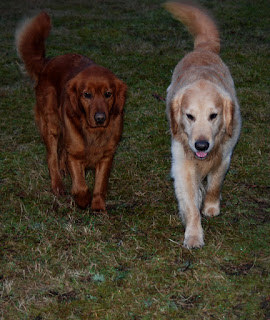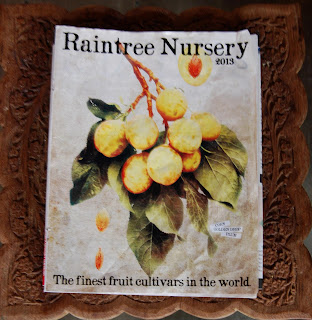We're beginning to feel the rumblings of Spring as the quiet of Winter is slowly winding down. From the holiday's until about the middle of February is my calm, reflective time of the year, with the ground frozen and snow there's not much to do, and I thoroughly enjoy it. Before I know it the pace will begin to pick up, and this year with 4 goats kidding, rabbits kindling, puppies being born, a garden to plant, and flower beds to weed, we'll be in the thick of it come April and May, and I'll be happy and loving it all. I sure am looking forward to the warmth of the sun again, and for the flowers and leaves to come back after their long winter's nap
Two weeks ago I finished milking Zolena, it was 2 months before her due date. For a year and a half, she was milked daily, usually giving us about a gallon a day in the Summer and half a gallon of milk through the winter. This one goat made all the milk our family needed. Being fairly new to goats when we purchased her in milk, she continually amazed all of us, and her milk is so delicious and creamy, we all miss it now, alot. Last winter I milked her through and didn't breed her, and my plan is to do that with both Jersey and her this next winter. Jersey our Nubian that I couldn't get bred last year is pregnant and due in about 2 weeks. Her udder is forming and I am thrilled that I'll finally be able to milk her. I'm also excited to see the kids that she will have, they'll be miniature Nubian's and can be registered as Miniatures. Joon is due in a month and as you can see in the picture above, she's getting bigger. The one I've been concerned about is Zolena, she didn't look pregnant, she's always been lean, but the last week I've been feeling better about her being pregnant as she seems to be growing. Maybe she only has one kid inside of her. Joon and Jersey both look like they'll have twins. Our little Snowdrop was bred on the Winter Soltice Dec. 21, so she'll be later than everyone else and will kid in May.
We have 30 chickens right now, 27 hens and 3 roosters, the two young roosters were hatched out by Henrietta last Fall. They began to crow a month ago, which is our signal that we need to process them and into the freezer they'll go. This is just part of farm life. An interesting tidbit of chicken information came to me last summer while I was at a small animal swap meet, I met a woman who told me how to tell by the shape of an egg whether it would be a rooster or hen. If the egg is long and pointy it is a rooster, short, squat and round it is a hen. I'll be trying it this year with the setting hens, ideally I only want them to hatch out hens, so, this will be an interesting experiment to try this year. I'm also planning to set up my egg selling stand in about a week. We're up to 9-14 eggs per day and will be increasing as the days lengthen.
A week ago my fruit trees arrived from Raintree Nursery, I heeled them in right away and have been planting one or two per day. Over the next 10 days I'll be pruning the apple and pear trees, as well as spreading compost on all the fruit trees. It involves hauling wheelbarrow load after wheelbarrow load to each tree. I also enlisted my husband to help me dig and plant a large old lilac that I wanted in a new bed. I've been scrambling to move plants that need to be moved while they're still dormant. Most are berry bushes that are getting huge and outgrowing the vegetable garden where I originally planted them. I moved the Aronia berry bush, two Serviceberry bushes, a Highbush Cranberry shrub and I still need to move the Elderberry, it has turned into a tree! I'm also moving out all the raspberries that had to be in there because of the deer, and forming to large rows behind the garden. I have a lot of raspberries to move while they're still dormant. Everything is beginning to show signs of life, thus the scramble.
As you know a couple weeks ago we went from 12 rabbits, down to 4 in one day. Our feed bill went way down, not that rabbits eat all that much, but when they're growing they have large appetites, which is normal of any young animal. I was cleaning cages every other day, now I'm doing them once per week. Right now I have 3 American Chinchilla's, 2 does and 1 buck, and 1 Champagne d' Argent doe. A couple weeks ago I contacted a friend who I know that raises Champagnes and asked her if she had any bucks, or would she consider a breeding for Hazel. She offered for me to buy a mature buck and doe, both pedigreed with cages. We're going to look at them this weekend. That would round out my rabbitry, with both breeds, and give me a couple extra large cages. Then for each breed I'd have 2 mature does and one buck, all of them pedigreed except one, Serendipity. I'm planning to start their breeding year this weekend, for kits due the first of April. I'm also planning to set up a website just for my rabbits to help sell them, and will be joining both clubs and the American Heritage Livestock Breeds Conservancy, which has American Chinchilla's on the critical list. Once I'm on the list people can find me to buy breeding stock.
It's been an unusually mild winter for us, we did have snow on the ground for several weeks in January, but we do every year. I know there's still a possibility of snow in March, but I'm hoping we're on the way to Spring!



















